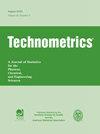用于校准昂贵仿真模型的序列贝叶斯实验设计
IF 2.5
3区 工程技术
Q1 STATISTICS & PROBABILITY
引用次数: 0
摘要
关键系统的仿真模型通常具有需要使用观测数据进行校准的参数。对于昂贵的模拟模型,校准是使用在不同参数设置的模拟输出上建立的模拟模型的模拟器来完成的。使用智能和自适应的参数选择来构建模拟器可以大大提高校准过程的效率。本文提出了一个序列框架,该框架具有一个新的参数选择标准,旨在学习参数的后验密度。该准则的突出表现是,勘探是通过在不确定的后验区域中选择参数来进行的,而开发则是通过在高后验密度区域中选择系数来进行的。通过几个模拟实验和核物理反应模型说明了该方法的优点。本文章由计算机程序翻译,如有差异,请以英文原文为准。
Sequential Bayesian experimental design for calibration of expensive simulation models
Simulation models of critical systems often have parameters that need to be calibrated using observed data. For expensive simulation models, calibration is done using an emulator of the simulation model built on simulation output at different parameter settings. Using intelligent and adaptive selection of parameters to build the emulator can drastically improve the efficiency of the calibration process. The article proposes a sequential framework with a novel criterion for parameter selection that targets learning the posterior density of the parameters. The emergent behavior from this criterion is that exploration happens by selecting parameters in uncertain posterior regions while simultaneously exploitation happens by selecting parameters in regions of high posterior density. The advantages of the proposed method are illustrated using several simulation experiments and a nuclear physics reaction model.
求助全文
通过发布文献求助,成功后即可免费获取论文全文。
去求助
来源期刊

Technometrics
管理科学-统计学与概率论
CiteScore
4.50
自引率
16.00%
发文量
59
审稿时长
>12 weeks
期刊介绍:
Technometrics is a Journal of Statistics for the Physical, Chemical, and Engineering Sciences, and is published Quarterly by the American Society for Quality and the American Statistical Association.Since its inception in 1959, the mission of Technometrics has been to contribute to the development and use of statistical methods in the physical, chemical, and engineering sciences.
 求助内容:
求助内容: 应助结果提醒方式:
应助结果提醒方式:


